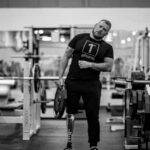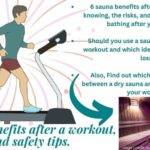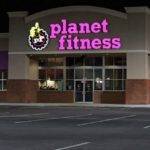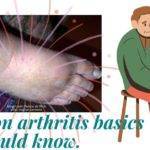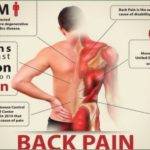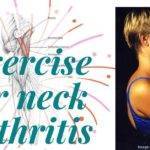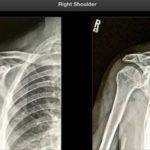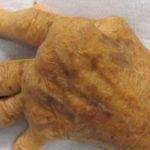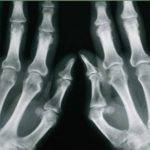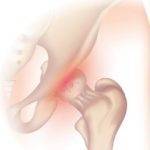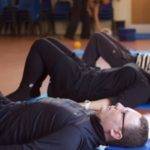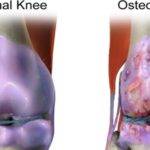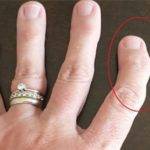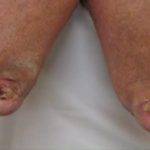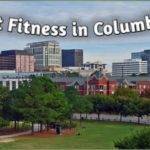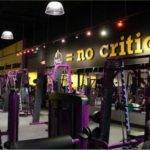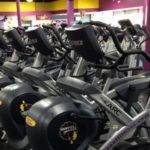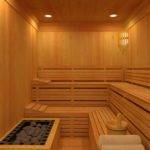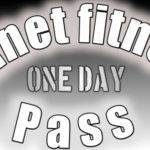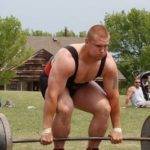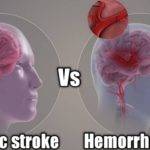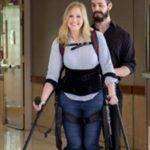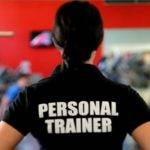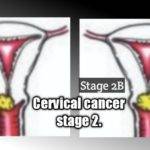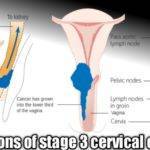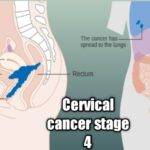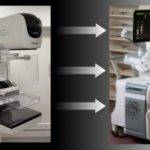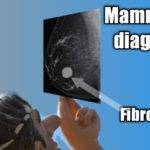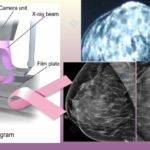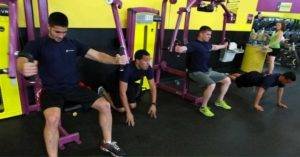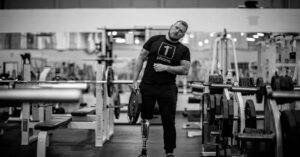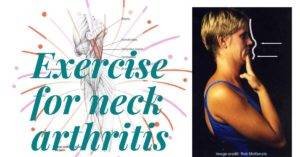
Table of Contents
Deadlifts are among the class of exercises that work on several muscle groups simultaneously just like Burpee exercises so are called compound exercises. They are ideal for working the back muscles, quads, and shoulders and are known for their effectiveness in boosting your functional strength and posture.
Though the principal muscles employed in deadlifts are the ones in your legs and hips it also involves other large muscle groups in your body. It is a very tasking exercise that puts considerable stress on your muscles.
There are several variations of the exercise. In this article, we’ll discuss deadlift exercises highlighting the proper ways of doing them, the variants, benefits, and so much more.
How to deadlift and the form.
This exercise could be detrimental if not done correctly using the right form. Below are the step-by-step details of how to deadlift.
Starting position.
- Stand with the weight in the same vertical plane with the middle of your feet with your toes extending beyond the bar and visible from the top.
- Your feet should be shoulder-width apart from each other. (This is to be maintained throughout the exercise)
- Your thumbs should be placed against the outer or lateral aspects of your thigh.
- Your eyes should be directed at a spot about 3 meters from your feet (to be maintained throughout the exercise). This helps to keep your head in a neutral position throughout the drill.
- Both feet should be straight ahead or slightly outwards. (to be maintained throughout the exercise)
- Your core and stomach muscles must be braced or contracted to stabilize the spine. (to be maintained throughout the exercise)
- Your chest should be kept up to prevent hunching (to be maintained throughout the exercise).
Grasping.
- Hinge at your hips and bend your knees as you squat.
- Run both hands down the sides of your leg until they reach the bar.
- Keep a straight back and avoid any rounding, arching, or twisting of your trunk.
- Grip the bar overhand (hands held in pronation) outside the sagittal plane of your knees. You may also use a mixed grip by using one overhand and one underhand-(grip with handheld in supination) grip, especially for heavy lifting.
- Make sure you grip the bar as strongly as you can with your arms vertical to the floor.
Lifting.
- Take a deep breath and hold your breath.
- Drive your heels into the floor and lift by pushing upwards with your legs from your knees and squeezing your glutes.
- As you lift, ensure your start by pushing the hips forward and not upwards to avoid your back becoming rounded.
- Your elbows should remain extended as you lift with your shoulders at a vertical plane that’s slightly in front of your hands.
- When lifted correctly, the bar may graze or almost graze your shins.
- Endeavor to squeeze your gluteal muscles as you lift above your knees. This will reduce the stress on your back.
- As you lift past the mid-thigh level you may retract your scapular (shoulder blades) to maintain a stable, secure, and strong trunk.
- At maximum height don’t hyper-extend your back, stand straight up but see to it that your legs lock.
Note that the further away the bar is from you the more the risk of injury and the more difficult it’ll be to lift the weight. For proper and safe lifting, the bar may have to be so close to the shin that it rubs against it. You could wear something that protects your shin from friction with the bar, like long socks that extend to your knees.
Deadlifting is better without shoes or at least with flat footwear as shown in the video above. Shoes not only give you more height to lift from but make you tilt forward altering your lifting pattern in the process. For best results, deadlift with a pair of long socks or do it barefooted.
Additionally, the Use of weightlifting belts is strongly advised especially when lifting heavier weights. While lifting, the pressure within your abdomen (intra-abdominal pressure) is increased as your stomach pushes against the belt. This further strengthens your core. While working with lighter weights try to do without the straps by bracing or contracting the abdominal muscles as much as you can.
Lowering.
On reaching full height, lower the barbell back to the floor or ground level in a controlled, reverse movement and ensure you don’t drop the bar.
Repeat the process over and over again until you reach the number of repetitions you aim to achieve.
16 different deadlift exercises or variations.
The deadlift exercise we’ve discussed so far is the standard or conventional deadlift. There are several other variations of the exercise you may find convenient if for any reason you want to do it differently.
1. Barbel deadlift: This is the conventional deadlift workout using a barbell just as described in detail above.
2. Rack pull: This is for those who can’t yet handle the full range of lifting using the conventional deadlift. Just as the name suggests, the weight is raised on racks or blocks as It is meant to decrease the range of motion involved in the conventional deadlift. This is good for starters. The rack pull can also be used to train in preparation for lifting heavier weights from the floor.
At Planet Fitness what you can do with available equipment is similar to a rack pull since they don’t encourage deadlifting. We’ll discuss this in another article.
3. Deficit deadlift: This is very much the opposite of rack pull deadlifting designed for experts who desire greater challenges of lifting through an increased range of motion. It’s more difficult than the conventional deadlift.
Unlike in the rack pull deadlift, it’s you who stands on an elevated position in a deficit deadlift. By deficit, it means the weight is resting on something below the feet level of your feet. Pulling from an elevated position makes you move through an increased range of motion than you would’ve in the conventional or rack pull deadlifts.
4. Sumo deadlift: This targets the hamstrings and reduces the chances of overarching your back. Here, you spread out your legs wider than your hips or shoulder width, move close to the bar with your legs, and hinge at the hips as usual. It also reduces the stress on your lower back when done correctly.
- You spread your legs to the extent you feel comfortable but they should be spread wider than hip-width.
- Your feet should follow the line of your knees which makes them point just about 45° outwards.
- Keep a straight back with your torso braced and contracted.
- Push your hips back and bend your knees as you lower your hands vertically, in between your knees, to reach the barbell.
- Grab the weight with either the double overhand grip or one overhand and an underhand grip. Your choice of grip should depend on the amount of weight or what you feel is best for you.
- Then, lift the barbell straight up.
- As you reach your maximum height, retract your shoulder blades and lock your knees.
- Lower the weight back to the ground in a reverse move. At this point, you’ve just completed one rep.
5. Single-leg Romanian deadlift: This exercise strengthens your balance, hamstrings, and ankle. However, because of the inclusion of balance training, it’s best you first get used to the workout by doing the body-weight type before applying external weights.
Starting with external weights could make it more challenging to maintain your balance and you may fall and get hurt.
By bodyweight type, it means training using your body weight without any external weight. After you’ve gotten used to the drill you may then apply weights like kettlebells or dumbbells. Starting with two kettlebells (one on each hand) may be easier than starting with one.
Also, using the tips of the trail leg or the non-weight-bearing leg for stability by planting them on the ground is good for beginners. When you do this, it becomes the kickstand Romanian deadlift. As you progress you get the toes lifted off the ground such that the entire non-weight-bearing leg is in line with your torso with the hip held in extension.
In order words, the single-leg deadlift is a progression of the kickstand deadlift. So I’ll advise you to start with the kickstand deadlift till your balancing reflexes are good enough for the progression.
You can also progress on a single-leg deadlift by doing contralateral deadweight lifting. Here, you use a single weight held on the opposite side (contralateral) of the stance leg. By stance leg, I’m referring to the leg that bears your body weight during the workout.
When you do this exercise, see to it that the free, non-weight-bearing leg points to the ground rather than sideways. This ensures proper hip alignment such that both sides of your hip lie on a more horizontal plane rather than an oblique plane.
6. Stiff leg Romanian deadlift: This is perhaps where to start in your deadlift training journey before embarking on other variations to avoid hurting yourself. In order words, it’s part of what can be described as a beginner’s deadlift.
- You start with your feet pointing forwards or slightly outwards but at hip-width apart.
- See to it your stomach and core muscles are well-contracted and braced.
- Keep the knees slightly bent but fixed in that position throughout the movement. This is where the stiff leg comes in.
- Hinge at your hips as you push your buts backward while keeping a straight back.
- Keep lowering the weight until your torso is almost parallel to the ground or you feel the stretch at your hamstrings.
- Get straight back up pushing through your heels while keeping the weight close to your shin or body.
At maximum height, you can squeeze your glutes and repeat the process up to the number of repetitions you desire.
7. Kettlebell Romanian deadlift: This is very much similar to the stiff-leg Romanian deadlift. One big difference is that the knees are not fixed in a slightly flexed position as we have in the stiff-legged. The weight, as the name suggests, should be a kettlebell held in both hands.
- Start by holding the kettlebell with both hands between your thighs.
- Ensure your abdominal muscles and torso are well contracted.
- Keep a straight back all through the exercise just like in other deadlift exercises.
- Hinge at the hips as you push your buts backward while bending the knees as you lower the kettlebell.
- At the point you feel a sufficient stretch at the glutes and or hamstrings, you can get back up by pushing through the heels even if the kettlebell didn’t go down to the floor.
- At maximum height contract the glutes and repeat the process as much as you want to.
8. Offset load deadlift: The idea behind this workout is to task your balancing reflexes, in other words, it trains the muscles that stabilize your core. You’ll work to prevent the rotation of your torso during the exercise as you either hold two different amounts of weight on both hands or bear weight on one hand but none on the other.
There can be as many variations of this deadlift as there are deadlifting techniques so long as there is an imbalance in weights borne in the two hands.
The process is straightforward and follows the procedure of other deadlift methods except for the variable load borne by the two sides of your body using either a barbell as shown in the video above, kettlebells, dumbbells, or any other weight that you find convenient.
Offset load deadlifts using lightweights can be employed in the rehabilitation program following conditions that lead to loss of muscle power, balance, and coordination like cases of hemiplegia.
9. Double leg resistance band deadlift: It’s similar to the conventional deadlift but with a different kind of weight which is the resistance band. To do this, you’ll need to place a looped resistance band on the floor.
- Step on the band such that it runs right across the middle of your feet with its looped ends sticking out at both sides of your feet.
- Your feet should be hip-width apart and pointing forward or slightly outwards.
- Keep your torso and abdominal muscles braced and contracted as usual.
- With slightly bent knees, hinge at your hips as you push your buts backward keeping a straight back.
- Reach out to grab each of the two looped ends of the band.
- Then, drive through your heels to pull the band till you are standing upright at which point you retract your shoulder blades and squeeze your glutes.
- Go down again in a reverse motion and repeat the process for more repetitions.
10. Sliding deadlift: For this, you’ll need a dumbbell or kettlebell, a slider or towel, plus a nice smooth surface.
- You’ll have to stand with your feet together while holding a weight on any of your hands.
- Then, place the slider under one of your feet.
- Ensure your abdominal muscles are pushed in and contracted along with your torso.
- Slightly bend both knees.
- Hinge at the hips and slide the leg with the slider backward while keeping a straight back, Simultaneously lower the weight towards the floor as much as you can till your torso is about parallel to the floor.
- Using the weight-bearing leg, push through the heels to reverse the slide and lift the weight till you are upright after which you squeeze your glutes. This is one repetition and you can do as many as you wish.
11. Single-leg resistance band deadlift: You’ll need a looped resistance band for this in the place of weight just as in the double-leg resistance band deadlift described earlier.
- Stand with a foot in the band making the elastic run underneath across the middle of the foot.
- Hold the band with both hands or a single hand such that in an upright position the band is stretched out and tensed.
- Endeavor to keep a straight back all through the workout.
- With well-contracted or braced torso plus abdominal muscles, hinge at the hips as you bend forwards allowing the other foot without the band to swing back behind you. The swinging leg should be at the same coronal plane as your torso.
- Bend as much as you can till your torso is about parallel to the floor after which you reverse the move to stand straight up and then squeeze your glutes to complete the rep. Repeat this move for as many repetitions as you like.
12. Trap bar or hex deadlift: In this type, rather than a straight bar, you have one that’s shaped like a hexagon with handles that are parallel to the direction you are facing. The handles and weight are at the same coronal plane with your body allowing you to lift with your hands at your sides rather than forwards.
This results in less stress on your back and allows you to lift bigger weights for faster gains In strength.
- Start by standing in the middle of the hexagon with your hands by your sides and feet at hip-width apart.
- Push in your stomach and brace your abdominal and torso muscles for the lift.
- Keeping a straight back, hinge at the hips as you push the hips back, and bend the knees as you lower your hands to reach the handles.
- Make sure you keep a straight back at all times.
- Grip the handles as much as you can and retract your shoulder blades as you prepare to lift.
- Drive through the heels and push your hips forward as you lift the weight.
- At maximum height, squeeze your glutes after which you lower the weight back to the floor in a reverse move. Do as many repetitions as you like.
13. Dumbbell deadlifts: It follows the same procedure as other deadlifts. The main difference is the type of weight and position. In this case, you want to use a pair of dumbbells as the name suggests.
Rather than have the weights at your sides or in front of you, you’ll place them in positions, that in anatomy, we call anterolaterally. This means they are midway between the front (anteriorly) and the side (laterally).
- Just as in other deadlift techniques, start by bracing your torso with your stomach pushed in.
- Hinge at the hip as you push it backward and bend the knees gently to reach the dumbbells while maintaining a straight back throughout the exercise.
- Grab the weights and retract or pinch your scapular (shoulder blades) in preparation for the lift.
- Push up through the floor with your heels and push your hips forward as you lift the dumbbells.
- At maximum height, squeeze your glutes before taking the weight down in a reverse motion. Do this for as many reps as you want.
14. Suitcase deadlift: You could use just about any weight you can grab and lift for this exercise but preferably a kettlebell. Standing with your feet at hip-width apart, you’ll need to place the kettlebell laterally right beside one of your feet such that it lies in the same vertical plane with your lateral malleolus (This is the bony prominence at the lateral aspect of your ankle).
The idea is to lift without tilting to the side of the weight. This helps to strengthen your core muscles and balance.
- With your torso braced or contracted, push your hip backward as you bend your knees to reach the weight.
- Keep a straight back all through the exercise as usual.
- Grab the weight and retract the shoulder blade to prepare for the lift.
- You may keep the opposite non-weight-bearing arm stretched out to help with balancing and reduce the possibility of tilting to the weight-bearing side.
- Push through your heels and push your hips forward as you lift the weight while resisting any tilting force.
- At maximum height, squeeze the glutes before lowering the weight in a reverse move. Repeat for as many repetitions as desired.
There is also the double suitcase deadlift where you lift weights on two arms rather than one as described above. If you do this with two kettlebells of varying weights, what you get is a variation of the offset deadlift.
15. Snatch-grip deadlift: This is very much like the conventional deadlift except for the target muscle group and the width of your grip. In the snatch-grip deadlift, you widen the width of your grip to about twice your shoulder width. It is targeted at training or strengthening your trapezoid or upper back muscle.
- Firstly, position yourself just in the same way you do when doing the conventional deadlift.
- Move close to the barbell such that it’s as close to your shin as possible.
- Your feet should be about hip-width apart and pointing forward or slightly outwards.
- With your hands by your side, push in the stomach and brace your torso.
- Keep your eyes fixated about a few meters ahead on the floor.
Remember to keep a straight back throughout the drill as with other deadlifts. - Hinge at your hips as you push them backward and bend your knees to grip the barbell with your hands.
- See that the width of your grip is about twice your shoulder width to target the upper back muscles.
- The horizontal plane of your hips should be lower than that of the shoulders.
- Drive through your heels, pushing your hips forward as you lift the barbell off the floor and up.
- As you hit maximum height, retract your shoulder blades, lock the knees, and squeeze your glutes to complete the rep.
16. Hack deadlift: This is very different from anything we listed earlier due primarily to the position of the weight about your body. Here, the barbel is positioned at the back of your legs and close to the calf muscles. The drill targets the quadriceps which are the group of anterior thigh muscles that are tasked with extending your knees.
- Stand with your hands by your side, feet at hip-width apart, and the barbell behind you with the bar close to your calf muscles.
- Push your stomach in and contract your torso.
- Push your hips backward and bend your knees as you reach out to the bar while keeping a straight back the whole time.
- Ensure your back is not curved or rounded but rather flat.
- Also, make sure your hips are lower than your shoulders.
- Grab the barbell and push through your heels as you lift the weight into a standing position.
- At maximum height, squeeze your glutes before lowering the barbell in a reverse movement.
The hack lift isn’t advisable for people with certain medical conditions because of the extra stress it places on the knees. Deadlifts in general are better done after a comprehensive medical evaluation to determine how safe they are for you because they could be injurious or may worsen any existing orthopedic or health issues you may have.
Best deadlift exercises.
There is no one-size-fits-all as regards this subject. As individuals differ so does the best deadlift for anyone. In other words, what is best for you may be bad for another.
Some of the factors that could influence what can be the best deadlift variation for you include but are not restricted to the following:
- Medical history,
- The current level of physical fitness,
- Body size,
- Presence of disability,
- Body stature,
- Body mass index,
- Age,
- Level of experience in deadlifting,
- Aim or objective for deadlifting.
As a beginner, the Romanian deadlifts could be where to start. Begin by using light weights before progressing to heavier weights. From here you may upgrade to the trap bar deadlift after which you try your hands on the Sumo deadlift before rising to the rigors of the conventional deadlift.
As you progress to higher levels of difficulty in deadlifts, modifying each new deadlift variant whereby you start by pulling from a rack may be better than starting all out from the floor.
The deficit deadlift should only be tried after mastery of the conventional deadlift technique. This is because it’s a lot more stressful with a higher risk of injury if you are not in the form to pull through longer ranges or are yet to learn the lifting technique.
If you are obese on account of which your knees are already battling with far more stress than they can handle, then the hack deadlift may not be for you.
For some medical conditions, you may have, consulting your healthcare provider in determining what variety of deadlifts is right for you is advisable.
Deadlift benefits, risks, and precautions.
Deadlift as a compound exercise is tremendously helpful in strength building among numerous other benefits. However, it has its share of risks and precautions to be taken.
21 Benefits of deadlift exercises.
1. Weight loss: Deadlifts, just like other exercises, increase your body’s metabolism and also could increase your heart rate from resting rate to fat burn heart rate. These effects lead to the burning of more calories that ultimately help with weight loss. ( source)
2. A reduced risk of injury to the spine: Deadlifts involve the strengthening of core muscles. A strong core reduces the risk of injury to the spine.
3. Improved protection of visceral or internal organs: Organs like the lungs and brain are housed and protected by bony frameworks but those inside your abdominal cavity are essentially protected by muscles. The protection they get depends on the strength of these muscles. When you deadlift you have to hold these muscles in sustained contraction which helps to strengthen them.
4. Increase in functional strength: The strengthening of muscle groups involved in deadlifts results in improved functional muscle strength for activities of daily living. (source)
5. Improvement in bone mineral density: Research has shown that resistance training has a greater effect on improving your bone density than other types of exercises. (source)
6. Prevention of osteoporosis: Osteoporosis is characterized by the loss of bone density. Research in this area has shown that resistance exercises like deadlifts help to improve bone density, and muscle mass, and reduction of factors that encourage osteoporosis. (source)
7. Prevention and reduction of lower back pain: Though the strengthening of back muscles from deadlifts can prevent the development of lower back pain, it could also help in the reduction of any existing lower back pain. (source) This will depend on the actual cause of the pain as many conditions could result in low back pain.
8. Prevention of Musculoskeletal Disorders: Resistance training exercises have been proven to reduce the incidence and treatment of various musculoskeletal disorders associated with aging.(source)
9. Improved cardiovascular health: A study has shown it reduces resting blood pressure and improves blood lipid levels, and the general circulatory system. (sources: ACSM and CEPP)
10. Reduction in levels of low-density cholesterol: Studies have shown resistance training exercises like deadlifts help to improve levels of good cholesterol in your body. (sources: Springer and NEJM)
11. Aesthetic and social benefits: The building up of the hip extensors via deadlifts gives ladies a type of well-rounded butts that some of them try to acquire artificially via surgeries. With deadlifts, this comes naturally, especially when combined with the usual squatting.
Do keep in touch by signing up for our newsletter:
12. Prevention of the negative effects of steroids on vertebra: There is evidence that progressive resistance exercises prevent drug-induced osteoporosis of the lumbar vertebra in lung transplant recipients. (source)
13. Reduction in risk of traumatic falls: The gains in muscle strength, stability, and balance as a result of deadlift exercises will reduce your risk of traumatic falls and injuries.
14. Postural correction: The procedure for deadlift exercises is the exact process of picking things lower than your arms can reach while standing. This includes picking things from the floor. People often curve and round their backs while keeping straight knees.
Not hinging at the hips and bending your knees while keeping a straight back or neutral spine is wrong even when not lifting any weights. It’s often the cause of intervertebral disc prolapse among other reasons for back pains.
By deadlifting, you train the muscles that are essential for the right posture during your activities of daily living. This makes it easier to correct the wrong posture and keep up with the right form.
15. Reverses aging factors in skeletal muscles: It has been proven by research that resistance training like deadlifts reverses the aging process in skeletal muscles. (source)
16. Resisting type 2 diabetes: Resistance training has also been proven to help in resisting type 2 diabetes. (source)
17. Reduction in arthritic discomforts: Deadlift exercise like other resistance exercises builds muscle strength and coupled with its reversal of the aging process of bones helps to reduce arthritic conditions. (source)
18. Improved mental health: Mental benefits of resistance training like deadlifts include reducing symptoms of depression, and improving self-esteem, and cognitive abilities. (source)
19. Fights sarcopenia: This is the loss of muscle mass and functional strength in adults with advancing age. Studies have shown resistance training like deadlifts can help reduce this natural process. (source)
20. Improved quality of life: Deadlifts help build strong and healthy muscles which helps to maintain an active life even in older adults. (source)
21. Correction of muscular deficiencies in Cancer and stroke survivors: It’s a well-established fact resistance training is essential in stroke rehabilitation. Research has also found it beneficial for cancer survivors as well. (source)
Risks.
Deadlift injuries are common and are often due to improper lifting technique and form. You could sustain injuries such as:
Ruptured or torn muscles. Injuries to the pectorals are the most common,
- Torn ligaments,
- Torn tendons.
- Intervertebral disc prolapse,
- Avulsion fractures, etc
Precautions.
You could move from a gym to the emergency room (ER) of a hospital within minutes if deadlift exercises are done wrongly.
Bracing torso: Keeping the muscles of your torso contracted or braced is important in stabilizing your spine against injury.
Keeping the bar close to your shin: You must keep the bar or weight as close to your shin or body as possible. Otherwise, it could result in enormous strain on the back which could lead to an injury.
Pulling: Endeavor to pull from your legs against the floor rather than your back or hands.
Ensure straight back: When deadlifting, curving or rounding your back is a recipe for injury. You need to keep a straight back at all times.
Previous soft tissue injury: We use the term, soft tissues, to refer to body tissues apart from bones. If you’ve had a recent soft tissue injury like a ruptured tendon, ligament, or muscle, you may have to wait till you have healed properly before attempting deadlift exercises.
Recent traumatic incidence: Going for proper medical check-ups after an accident or trauma before attempting a dead weight lift could be the thin line separating a successful workout from a disaster. Even if you feel well, there could be internal injuries unknown to you like hairline bone fractures.
History of cardiovascular problems: Not checking with your cardiologist or physician to make sure you have a properly working heart could result in serious problems while deadlifting. Failure of the heart to pump sufficient blood to the brain during strenuous exercises can make you pass out after a deadlift.
Recent surgery: Anyone who has had surgery should wait to heal properly before attempting or resuming deadlifts.
















